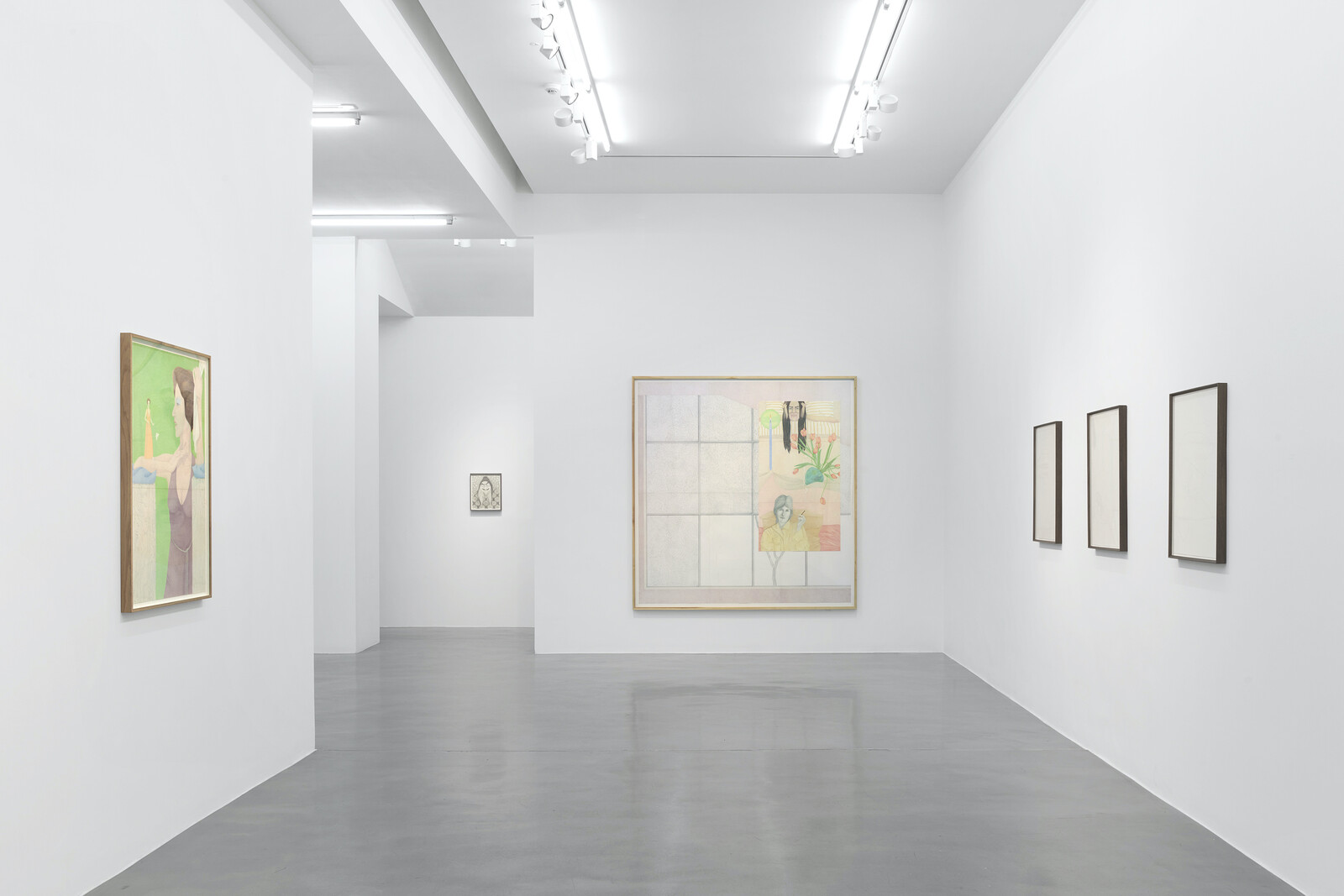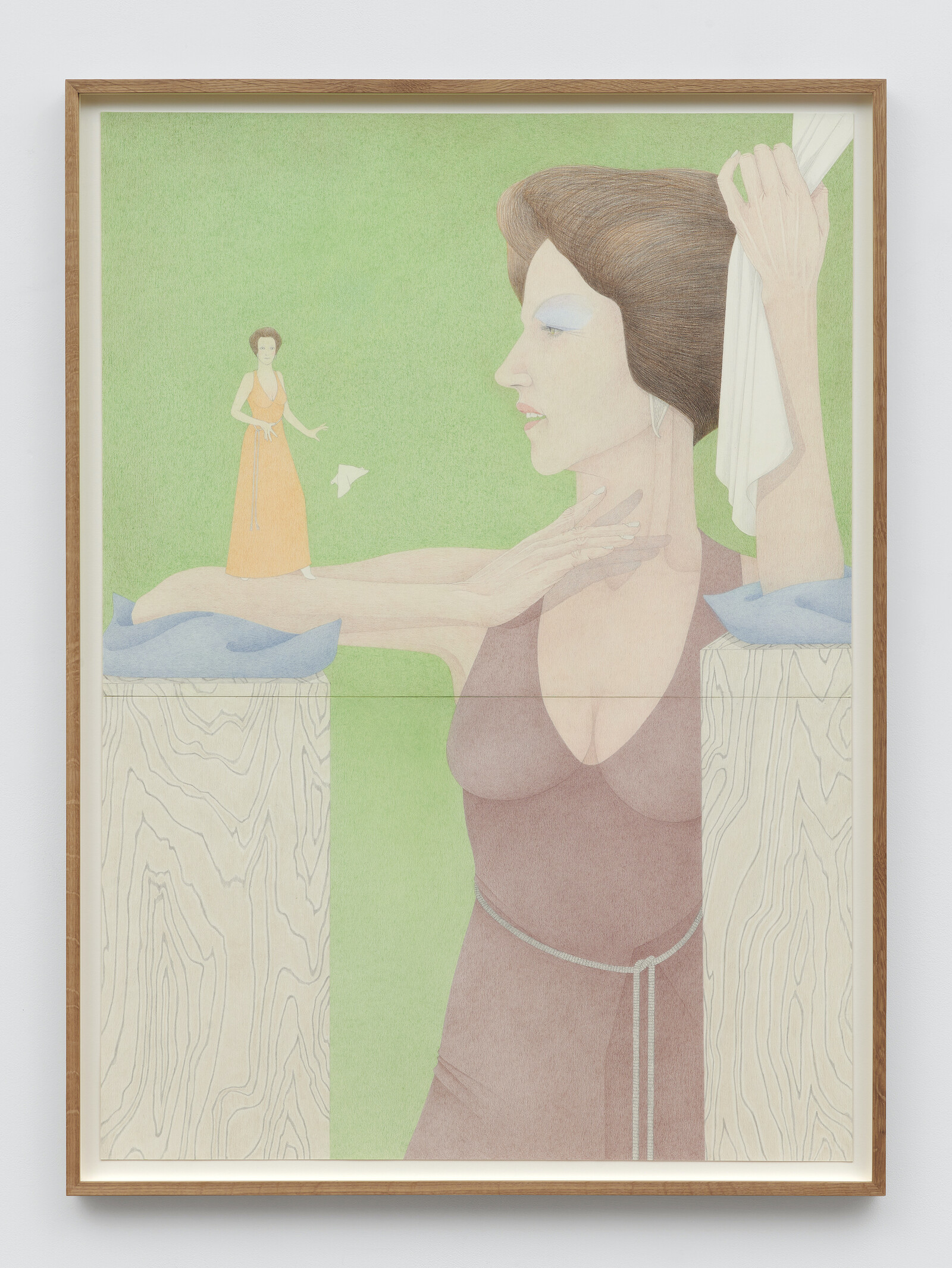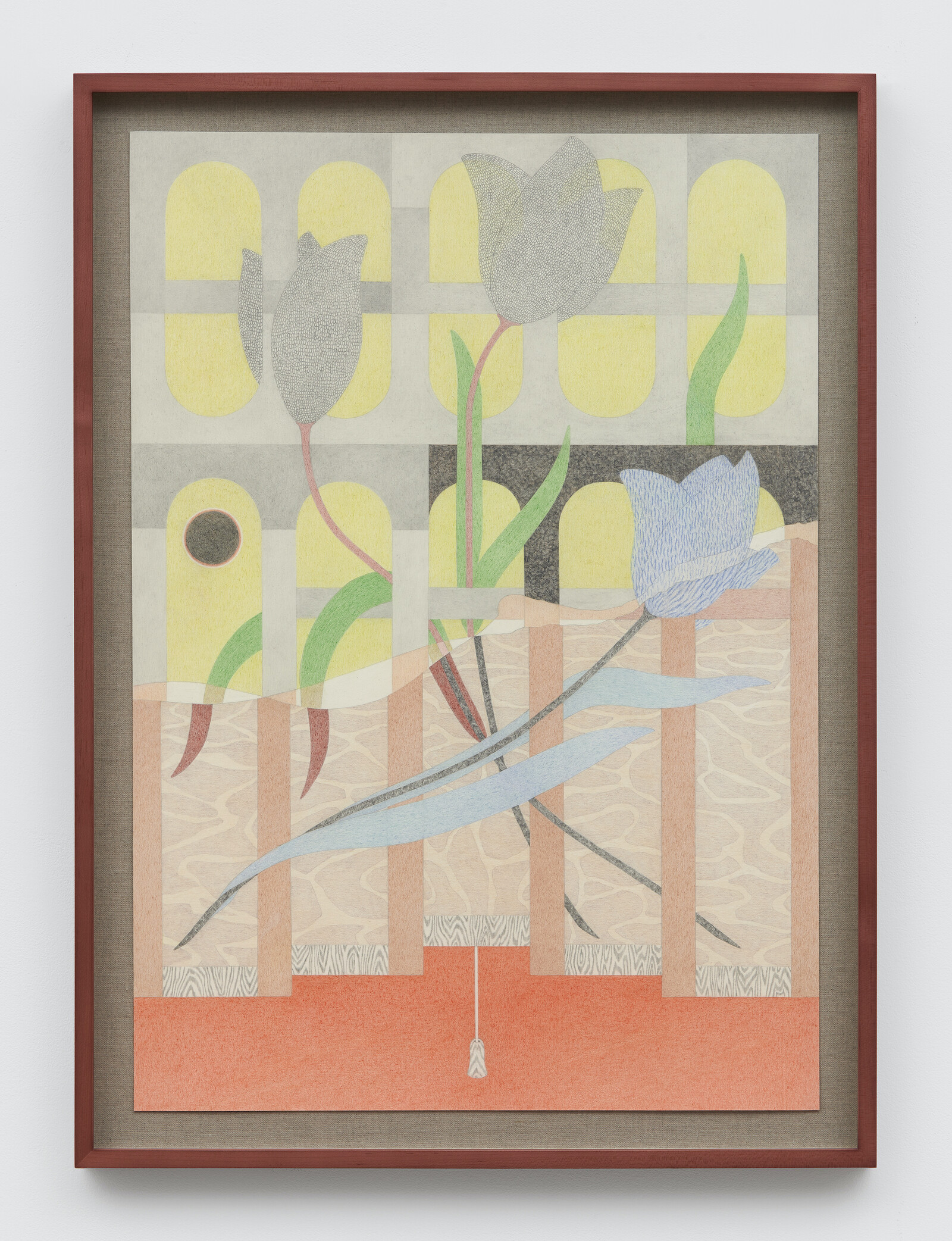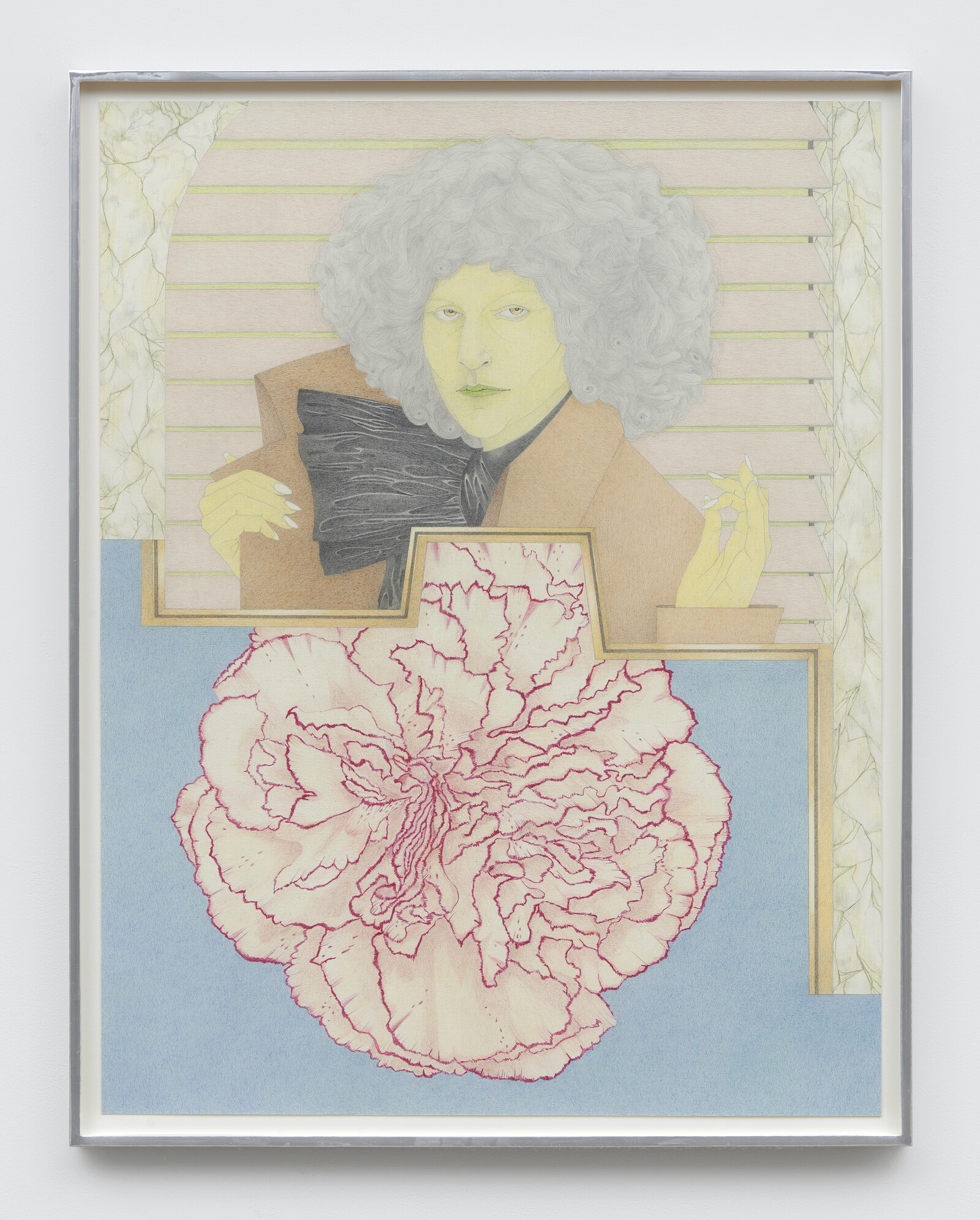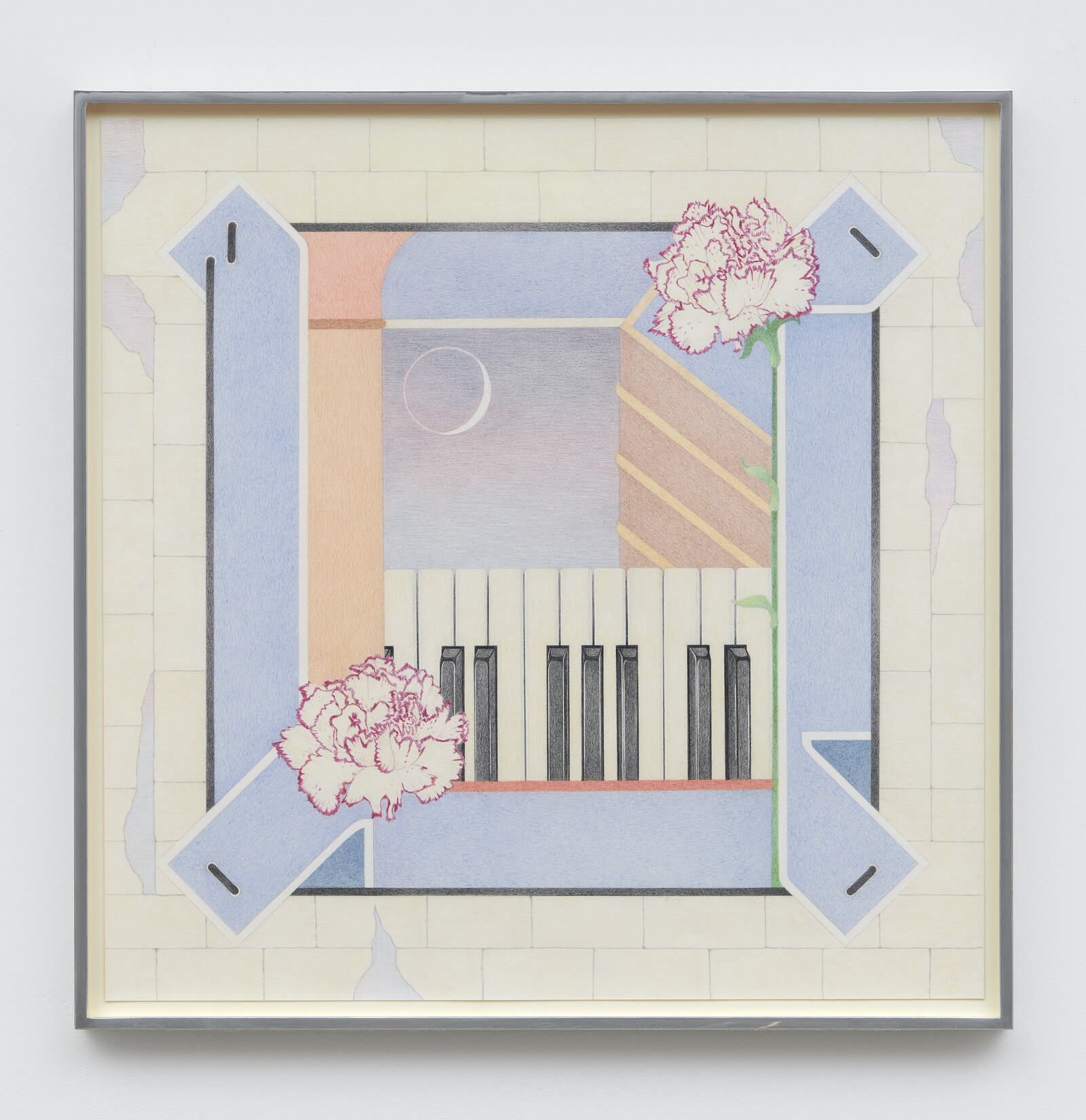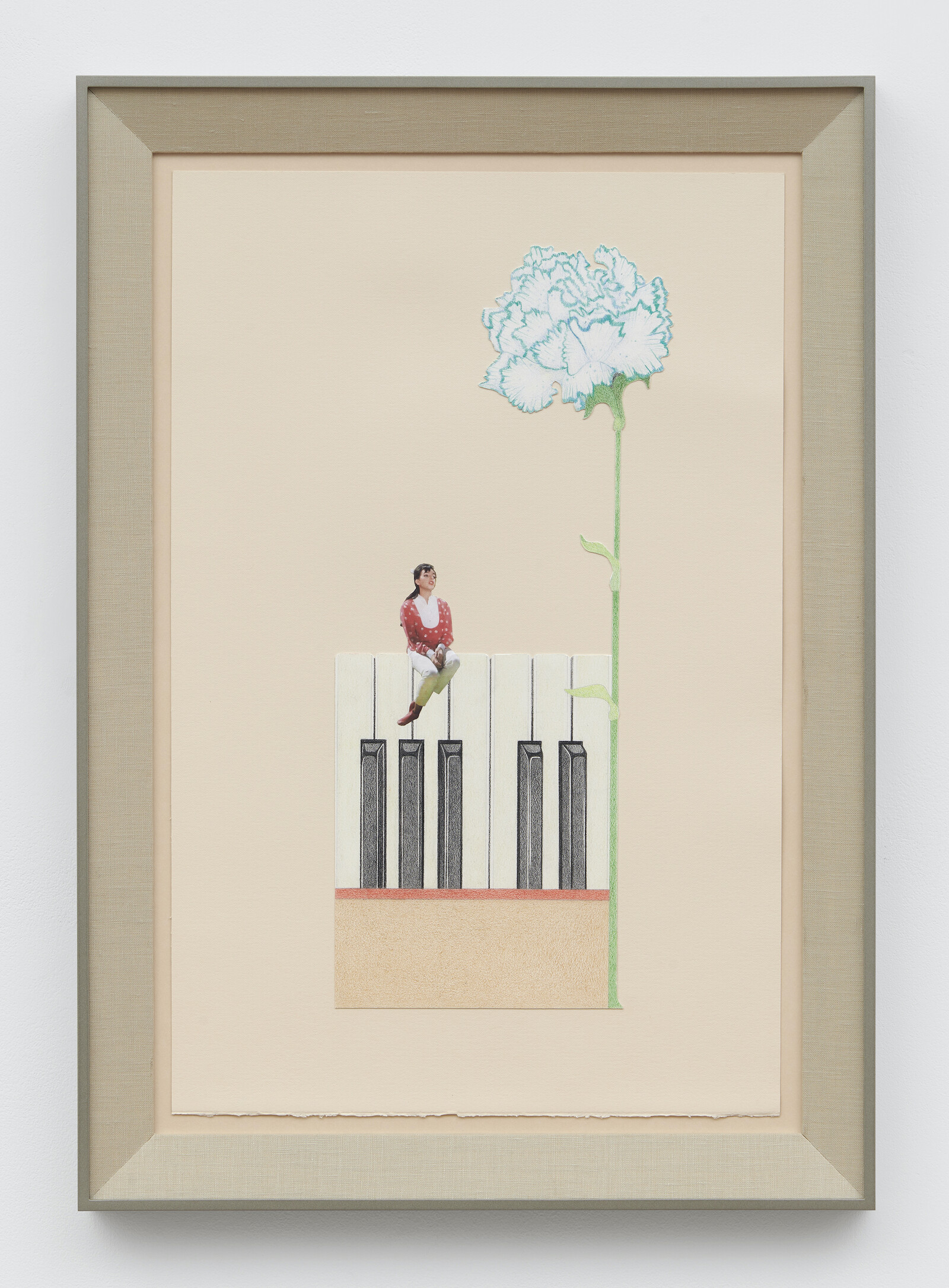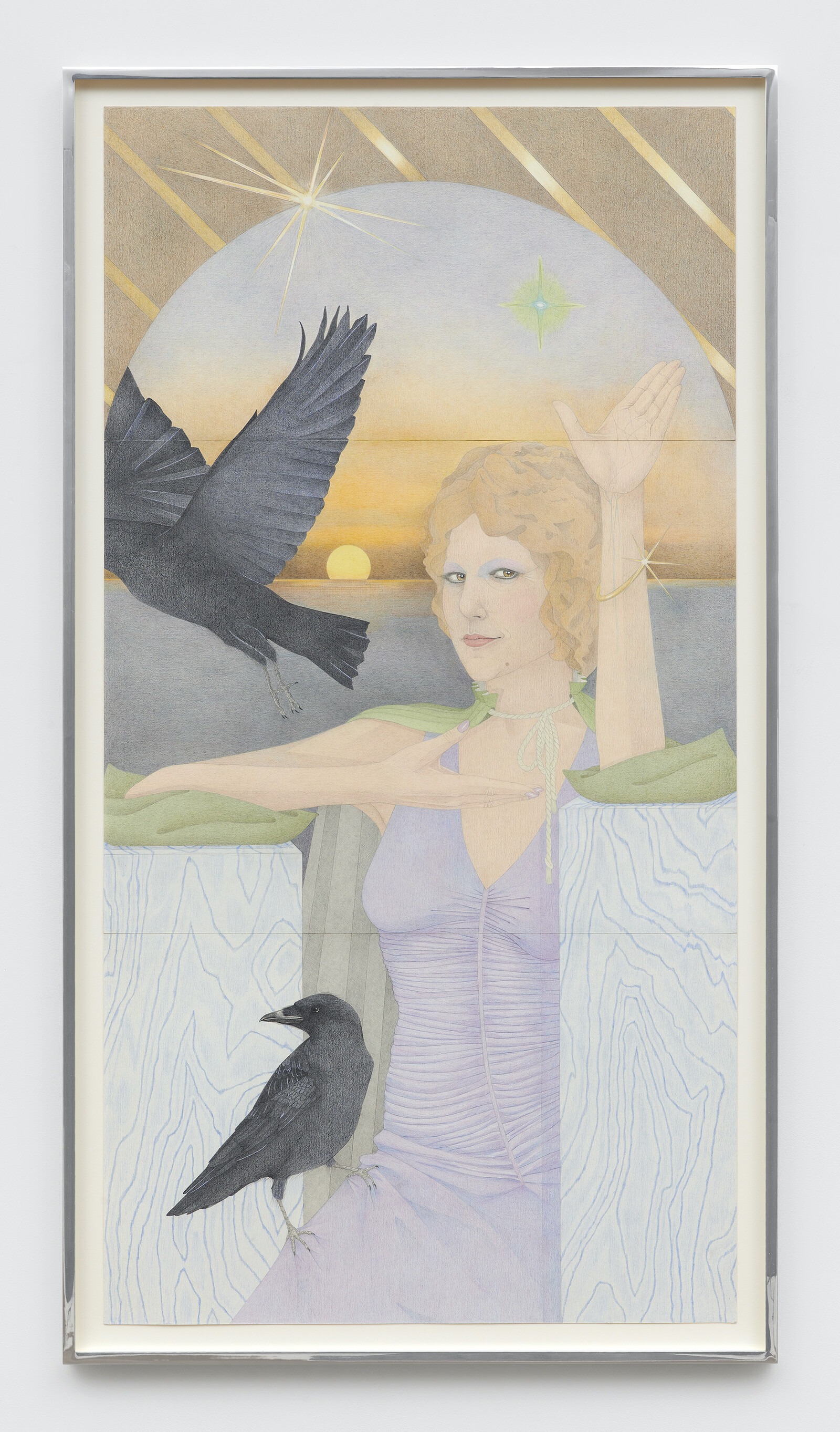If you had been wandering the corridors of the National Institute of Dramatic Arts, Sydney, sometime around the year 1997, you might have happened upon a young, overworked Donna Huddleston. The artist documented her experiences studying set and costume in the monumental 2019 work The Exhausted Student, in which a pale waif, having fainted, is held aloft by a group of concerned, impeccably dressed undergrads in a sling of milky green drapery, pieta-like. Informed by Huddleston’s student years, the artist’s first exhibition at London’s Simon Lee Gallery stages a one-woman show over eleven unabashedly theatrical new works on paper. The drawings here mark a departure from The Exhausted Student’s tableau form, instead focusing in on strange intimacies and individual dramas.
Several pieces show the artist herself, roughly life-size, donning various glamorous disguises: slinky, ruched dresses with plunging necklines; ruffled poet’s blouses under tailored camel coats; immaculately coiffed wigs. She slips from frame to frame like a woman on the run. Most are rendered entirely in Caran d’Ache pencil, a painstakingly slow process and unforgiving material which lends itself naturally to the artist’s taste for minute detail against flat, overlapping planes and tightly choreographed mise-en-scene. Blocks of color are lightly flecked with the pencils’ grain like slub in raw silk. Each field is charged with the directionality of a small, sharp point; each mark’s density of pigment records the weight of the hand which made it.
As Karin Thimm, the beautiful object of the titular character’s obsession in Rainer Werner Fassbinder’s The Bitter Tears of Petra von Kant (1972), reasons, “discipline is okay as long as you’re having fun.” Huddleston cites Fassbinder’s work as a direct inspiration for her most recent drawings, and Petra looms large over Brighter and The Stand In (all works 2021), equally filmic and theatrical in their composition and seductive, lavishly costumed leading ladies. It is the film’s dialectic of discipline and compulsion, however, that feels most present in these works, which wear the slow labor of their making so gracefully on their sleeves. The rigorous training responsible for the collapse of the one-time exhausted student is present in Huddleston’s diligent mark-making and industrious attention to texture: marble looks cold to the touch, and the brush of silk on skin is near-audible. But from the figures’ puckish, knowing glances directed to the audience beyond the frame, it is clear that the artist, while disciplined, is adhering to Karin’s mantra and having a good time.
The Stand In depicts a woman in profile against an arsenic green background. She is stood behind two squat, rectangular pillars striated with markings similar to those of the grain of cut wood. She strikes a pose, a reverse L-shape: her elbows sit on soft, cornflower blue cushions atop the supports to her left and right. Her left arm is a horizontal line, folded back on itself so that its hand grazes her pale throat, whilst her right reaches upwards to idly grasp a white cloth hanging from somewhere off-stage. At the soft crook of her left elbow stands the target of her gaze: a miniature doppelganger stepping daintily into center frame, her dropped handkerchief suspended mid-air like a tiny ghost.
Brighter, hung on the opposite wall, sees a near-identical woman emerging from between the same pillars, arms propped up in the same stance, elbows resting on the same soft cushions—sage green, this time. Her upper palm is open, veins spill down her wrist in faint blue streams. She wears a cape knotted loosely at the neck, and is accompanied not by a pocket-sized double, but a pair of sleek black crows. In the background, a sun sets over a calm sea. Both scenes have the atmosphere of a magic trick.
The campy, glamorous allure of spellcasting and enchantment is central to the logic which binds the works of “In Person”; the ease with which disparate elements hang together. Tucked in a nook between the gallery office and a flight of steps, a compact, monochrome portrait of the Evil Queen from 1937’s Snow White (aptly named Hag) charms, despite my growing sense of witch-art fatigue (watch out, mushrooms—you’re next). Against the clean Disney lines of her grinning face—all arched eyebrows, boils and sagging cheeks—the old crone’s cloak is made up of a repeated geometric pattern somewhere between a 1970s wallpaper and a magic eye puzzle.
But as much as she revels in the illusory potential of stagecraft and sorcery, Huddleston is careful never to obscure the artifice which underpins her compositions. Great care is taken, for instance, over the framing and mounting of each individual piece, and frames are often drawn into the scenes themselves, as if to further demarcate the confines within which their micro-dramas play out. Such detail ensures that the work’s theatricality is not merely an aesthetic trope but a core part of its mechanics. Take the jagged band of gold frame which bisects the top and bottom halves of Personal Development; the taut black shoelaces which thread so neatly through New Moon’s corner grommets; the pull cord which hangs expectantly at the base of Eclipse; the elegant hitch knots and screw eyes of Capricorn One. The artist attends to the minutiae of fixings and joinery with the same reverence she affords billowing carnation petals and vases of wilting tulips; a magician explaining their sleight of hand even as they perform.
